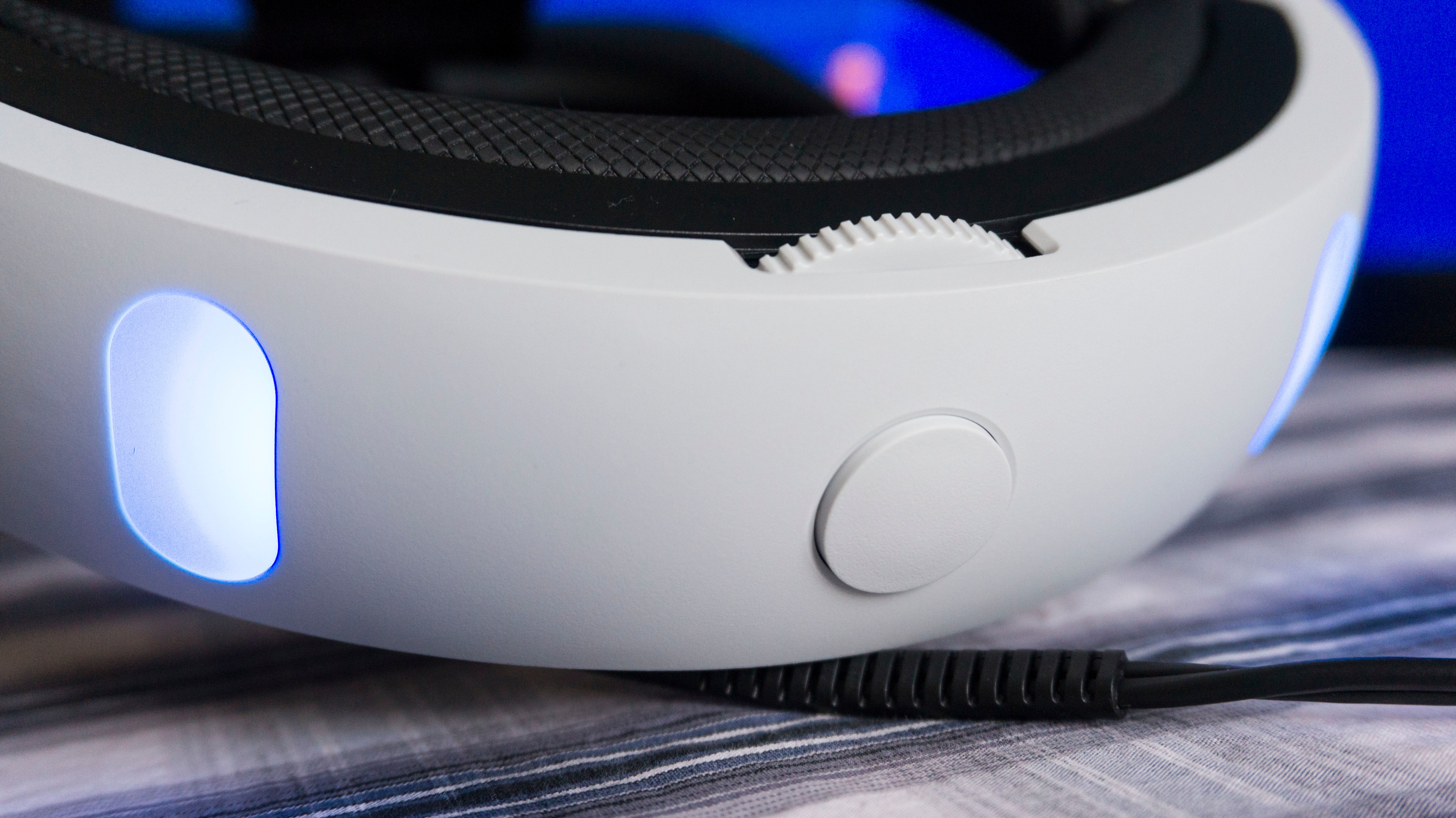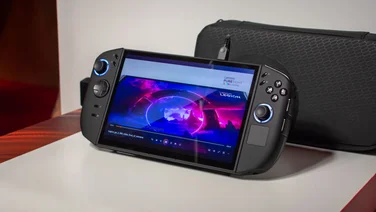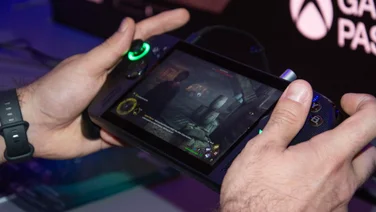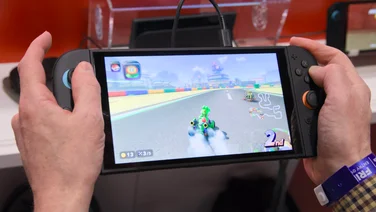To help us provide you with free impartial advice, we may earn a commission if you buy through links on our site. Learn more

- Much cheaper than Vive or Oculus
- Works with all PS4 consoles
- 120Hz refresh rate for smooth visuals
- Resident Evil 7 on PS VR is a game changer
- Resolution is disappointing
- PlayStation Camera isn't included in the box
- Move controllers aren't included
There are now three VR headsets available to consumers, but in reality the PS VR is the one you’re most likely to buy. It’s a rare case of a product actually living up to the hype, and, although it doesn’t yet have the huge game library it needs, new titles such as Resident Evil 7 are able to bring a really immersive experience to your living room. It delivers a comprehensive VR experience, and if you’ve got a PS4 or a PS4 Pro, it’s certainly worth a look.
PlayStation VR review: What you need to know
If you own a PS4 and a DualShock 4 controller you’re already halfway there. The PSVR simply plugs into the back of the console via the bundled control box, with the only other requirement being a PlayStation Camera. This doesn’t come with the headset, but several retailers are selling it as part of a PSVR bundle pack, so you shouldn’t have too much trouble tracking one down.
The PS Camera you’ll most likely see being sold is the new second-generation version, which now has a cylindrical design and hinge-stand making it easier to align with the headset. The hardware inside it is exactly the same as the previous model, though, so don’t make the mistake of upgrading if you already own one.

With those three things in place, you’re good to go. There’s no PC involved, no hassle of having to upgrade any of your rig’s components, and you don’t need to clear out a significant portion of your living room to use it. Sony still recommends you sit around five feet away from the camera, but given that PSVR is primarily a seated VR experience, at least you won’t have to move the furniture around every time you want to start playing.
PlayStation Move controllers
It’s also worth noting that PSVR supports Sony’s Move controllers as well. These motion-control wands were originally launched for the PS3 after the runaway success of the Wii, but since then they haven’t had much love, as there simply haven’t been that many games released that actually support them. However, if you happen to have a couple gathering dust in the back of an old cupboard, now is exactly the right time to bring them out of hibernation, as several PSVR games are using them to great effect.
They’re not essential controllers – there are very few games which only support Move controllers – but I’d recommend trying to track some down if you want to get the very best VR experience possible. Most games that do support them, for instance, use them to act as a disembodied pair of hands, allowing you to interact with your environment far more naturally than you would with a DualShock 4 controller.
PlayStation VR review: Setting it up

Just like the Oculus Rift and HTC Vive, PlayStation VR is a tethered headset. That means there’s a long cable that trails from the back of the headset into the main control box, which in turn plugs into the back of the PS4. You’ll be sitting down most of the time, so it’s unlikely you’ll find your legs getting tangled up in them, but it’s something to be aware of if your console lives in a busy living room with kids or pets rushing in and out. You can stand and move about a little bit if you’re playing a game that supports Sony’s optional motion-sensing PlayStation Move controllers, but these are still largely stationary experiences that don’t require you to walk around.
You’ll find two joined-up cables trailing out the back of the headset: one HDMI cable and one proprietary connection that can either plug into the bundled extension lead, taking the total cable length to 4.4m, or straight into the main control box. Dubbed the “Processing Unit”, this device mirrors the design of the original PS4, with a split running down one-third of the box and an LED light strip across the front. The smaller section neatly slides backwards to reveal two ports, which Sony has marked with its classic Square, Circle, X and Triangle symbols. Then you slide the housing back to keep everything looking neat and tidy.
At the back of the Processing Unit is a power socket, a micro-USB port and two HDMI outputs – one for plugging into your TV and one for plugging into your PS4. All the cables are included in the box. You only get one HDMI lead, but this won’t be a problem, since you should already have an HDMI cable connecting your PS4 to your TV.
The micro-USB port is to be connected to one of your PS4’s USB ports. Annoyingly, these are on the front of the console, so you’ll have to put up with at least one wire trailing out in front. That’s a shame considering the lengths to which Sony has gone to make the Processing Unit box so discreet.
Finally, there’s the PlayStation Camera. Rather than connecting to the Processing Unit, all you need to do is plug it into the PS4’s rear aux port and place it in front of where you’re likely to sit. This is vital, as it’s this device that’s responsible for tracking your head movements via the blue lights on the front of the headset. All in all, it’s pretty painless compared to how long it took to set up the Vive; I was up and running in less than 15 minutes.
PlayStation VR review: Hardware comfort specs
The PSVR headset itself is the most comfortable head-mounted display on the maket right now. Its minimalist, black-and-white design not only looks like it’s been teleported in from the future, but it’s also exceedingly lightweight, weighing a mere 610g. That’s a fraction heavier than the Vive, but whereas the Vive looks more like a first-gen prototype, with its Velcro straps and visible cable trails dangling around the back, at least Sony’s gone to the effort of making it look like a proper, finished consumer product.

The flexible headband sits snugly over your forehead, and it’s clear Sony has put plenty of thought into its overall design. A small button on the underside of the display allows the spring-loaded front display to retract in and out, giving you clearance to loop the headband over your head, and a button on the rear of the headband lets you stretch its two internal rubber straps to pull it all the way down over your eyes. There’s also a dial just above the headband button at the rear to help tighten and fix the headset in place; finally, all you need to do is press the button beneath the display to bring the front of the headset back towards your face.
You’ll want to make sure the headset’s small volume controller is within easy reach, as you’ll need this to use its inline microphone and plug in a pair of headphones. Just Like the Vive, the PSVR doesn’t have built-in headphones, so you’ll need to supply your own if you want to take advantage of its “3D binaural audio”.
In case you’re unfamiliar with binaural audio, these specially recorded tracks use 360-degree microphones to produce an all-encompassing soundtrack, which is supposed to produce a sensation of being in the room with the audio. It’s intended to be played back specifically via headphones. You can still listen to what’s being pumped out of your TV speakers, but I’d recommend using headphones if you really want to feel truly present in your virtual world. You’ll need to avoid headphones with built-in microphones, though, as these will conflict with the one inside the headset’s controller.
Inside the headset itself is a 5.7in, 1,920 x 1,080 OLED display. That resolution is quite a bit lower than the 2,160 x 1,200 screens in the HTC Vive and Oculus Rift, but the PSVR has a higher maximum refresh rate of 120Hz.
Most PSVR games available right now run at a regular 60Hz, but Sony’s clever software trickery boosts this to 120Hz to make it appear smoother. Using its own so-called “reprojection” technique, this involves taking the last outputted image at 60Hz and creating a new one at 120Hz based on the user’s latest head movement. This is different to regular frame interpolation, according to Sony, as it doesn’t introduce any extra lag between the images presented onscreen. Either way, while it might not be true 120Hz footage, the result is still extremely convincing. It’s noticeably smoother than the Vive’s 90Hz refresh rate and Sony’s claimed ultra-low latency figure of just 0.018 seconds means I rarely suffered any bouts of nausea or motion sickness.

What’s more, the headset has been designed in such as way that you can still see your DualShock 4 controller if you glance downwards, with a slight gap in the headset’s rubber surround. This might offend VR purists who want total immersion, but even though it does cause some light bleed, it didn’t adversely affect my playing experience. Likewise, the fact I could still glance down at the controls as and when I needed felt immensely reassuring.
It’s an incredibly practical headset, but the one downside of the PlayStation VR is its comparatively low resolution. This made itself felt on a number of occasions during my testing. Objects onscreen often looked quite soft and pixellated, and text was visibly jagged. Luckily, most of the games I’ve played – including RIGS: Mechanized Combat League, PlayStation VR Worlds, Battlezone and The Playroom VR – employ a fairly soft, block-colour approach that helps mask any loss of fine detail. However, if there’s one thing that’s going to derail your sense of immersion, it’s seeing virtual faces that are pixellated horror shows, like those in Until Dawn: Rush of Blood, or watching Driveclub VR‘s grand vistas blur into a single mass of colour.
However, while the low resolution is a weakness, it isn’t a deal-breaker for me. Yes, a higher-resolution display would have been nice, but that would have also made the headset more expensive. As it stands, the fact that Sony has managed to create such compelling VR for £349 is something to be applauded.

After all, there’s still nothing quite like being surrounded by one of RIGS‘ hulking mechanoid robots or flying a spaceship in EVE: Valkyrie‘s full 360-degree dogfights, and for most people, I’m confident, that in itself will be enough. Those who want a higher-quality VR experience (and are willing to pay for it) have other options, namely the Vive and Oculus Rift. For everyone else, PSVR does a grand job of making you feel part of these strange, new virtual worlds, and its relatively simple setup also makes it the most accessible and consumer-friendly VR headset yet.
PlayStation VR review: Verdict
Despite the comparatively low resolution, Sony has managed to achieve something special here. Resolution quibbles aside, the PSVR is a fantastic VR headset that has a great line-up of games and is excellent value for money. It’s easy to set up and exceedingly simple to use, and the fact you can plug just it into an existing PS4, PS4 Slim or the PS4 Pro only makes it more attractive.
Of course, it remains to be seen whether Sony will be able to sustain its game library over the next couple of years, but from what I’ve seen so far, the PSVR has everything it needs to be the must-have VR headset of 2016 and 2017, not to mention one of the best accessories Sony has ever produced.
I’d recommend trying one out before you buy if you can, if only to see whether you’re particularly susceptible to motion sickness, but if you already own a PS4 and want to take your games to the next level, then the PlayStation VR is a must-buy.








